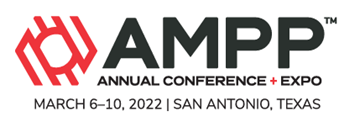Search
Online Conference Paper
View as
Sort by
Display
per page
The Limitations Of Traditional Corrosion Detection Methods To Stainless-Steel Reinforced Concrete
Product Number:
51321-16873-SG
Publication Date:
2021
$20.00
The Long Term Effects Of Surface Preparation: Evaluating ISO 12944 In Offshore Coating Application With Waterjetting And Cleaning Additive
Product Number:
51322-18021-SG
Publication Date:
2022
$20.00
The Mechanical Behavior of Hydrogen Charged Beryllium Copper
Product Number:
51386-86171-SG
Publication Date:
1986
$20.00
The Need For Independent 3Rd Party Coatings Inspectors On All Industrial Coatings Projects
Product Number:
51322-18101-SG
Publication Date:
2022
$20.00
The NEPCOAT Story- Bridge Paint Selection In The North East
Product Number:
51322-17834-SG
Publication Date:
2022
$20.00
The Optimized Inspection Approaches of PSA Adsorber Weldment Integrity with the Buried Cracks
Product Number:
51324-20689-SG
Publication Date:
2024
$40.00
The Path towards More Consistent Evaluation of Corrosion Inhibitors Used in the Oil and Gas Industry
Product Number:
51324-20702-SG
Publication Date:
2024
$40.00
The Path Towards More Consistent Evaluation of Corrosion Inhibitors Used in the Oil and Gas Industry
Product Number:
MECC23-20250-SG
Publication Date:
2023
$20.00
The Performance Of HPHT Corrosion Inhibitor At Offshore Downhole Sour Conditions
Product Number:
51322-17752-SG
Publication Date:
2022
$20.00
The Performance of Phenolic Epoxy Coating after Thermal Exposure for Corrosion Protection in Marine Environments
Product Number:
51323-19046-SG
Publication Date:
2023
$20.00
The Performance Study of High-Temperature, High-Pressure (HTHP) Corrosion Inhibitors at Sour Conditions
Product Number:
MECC23-20051-SG
Publication Date:
2023
$20.00












